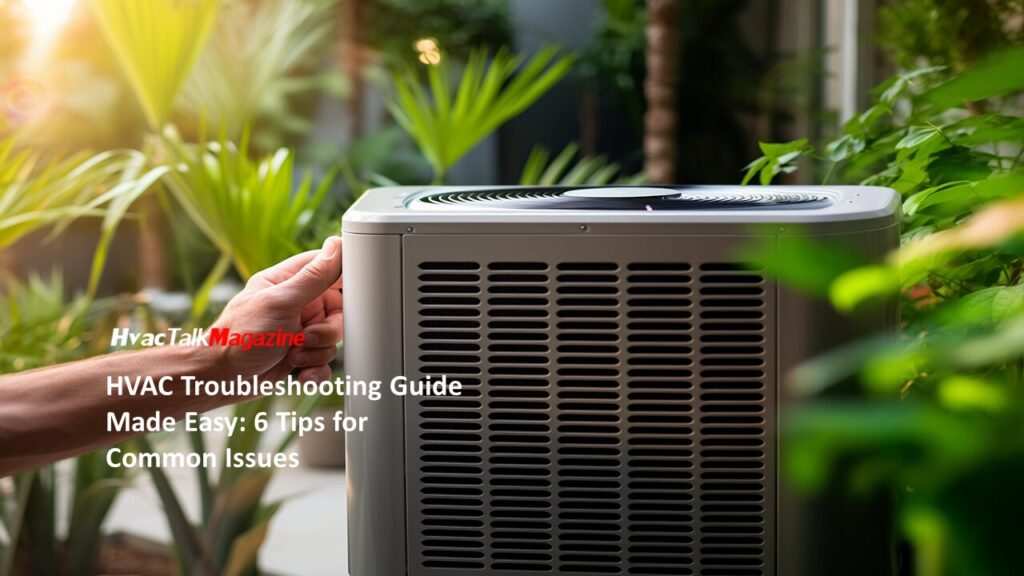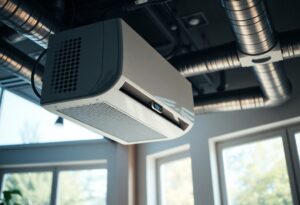HVAC Troubleshooting Guide Made Easy: 6 Tips for Common Issues
A smoothly running HVAC system is essential for maintaining a comfortable and healthy indoor environment. However, like any mechanical system, HVAC units can encounter issues from time to time. Understanding how to troubleshoot common problems can save you time and money while ensuring your system operates efficiently. In this blog post, we’ll provide an easy-to-follow HVAC troubleshooting guide, helping you identify and resolve common heating and cooling issues.
HVAC Troubleshooting Guide: Common HVAC Problems and Solutions
1. HVAC System Not Turning On
Problem: Your HVAC system doesn’t turn on when you adjust the thermostat.
Solutions:
- Check the Thermostat: Ensure your thermostat is set to the correct mode (heating or cooling) and the desired temperature. Replace the batteries if they are low.
- Inspect the Power Supply: Check if the HVAC system is receiving power. Look for tripped circuit breakers or blown fuses and reset or replace them if necessary.
- Examine the Power Switch: Make sure the power switch near the indoor unit is turned on. This switch can sometimes be mistaken for a light switch and accidentally turned off.
2. Inadequate Heating or Cooling
Problem: The HVAC system is running, but the indoor temperature isn’t reaching the desired level.
Solutions:
- Check the Air Filter: A dirty air filter can restrict airflow, reducing the system’s efficiency. Replace the filter if it’s clogged.
- Inspect the Vents: Ensure all supply and return vents are open and unobstructed by furniture, curtains, or other objects.
- Clean the Coils: Dirty evaporator or condenser coils can hinder the system’s performance. Turn off the power and clean the coils with a soft brush or a vacuum cleaner.
3. HVAC troubleshooting guide: Uneven Temperature Distribution
Problem: Some rooms in your home are too hot or too cold compared to others.
Solutions:
- Balance the Airflow: Adjust the dampers in your ductwork to balance the airflow throughout your home. This can help distribute heated or cooled air more evenly.
- Inspect the Ductwork: Look for leaks or disconnections in the ductwork that could be causing uneven airflow. Seal any gaps with duct tape or mastic sealant.
- Check Insulation: Ensure that your home’s insulation is adequate, especially in the attic and crawl spaces, to prevent heat loss or gain.
Tip of the Day
Upgrade to a high-efficiency furnace and enjoy optimal home heating with reduced energy costs! Experience reliable warmth and enhanced comfort.
👉 Shop now and invest in a high-efficiency furnace for your home. Stay warm and save on energy bills this winter!
4. HVAC troubleshooting guide: Furnace Blowing Cold Air
Problem: Your furnace is running, but it’s blowing cold air instead of warm air.
Solutions:
- Verify Thermostat Settings: Ensure the thermostat is set to “heat” and the fan is set to “auto.” If the fan is set to “on,” it may blow air continuously, even when the furnace isn’t heating.
- Relight the Pilot Light: For older furnaces with a pilot light, check if it’s lit. Follow the manufacturer’s instructions to relight it if necessary.
- Inspect the Ignition System: Modern furnaces use electronic igniters. If the igniter is faulty, the furnace won’t produce heat. Contact a professional for repair or replacement.
5. HVAC troubleshooting guide: Air Conditioner Blowing Warm Air
Problem: Your air conditioner is running, but it’s blowing warm air instead of cool air.
Solutions:
- Check the Thermostat Settings: Ensure the thermostat is set to “cool” and the temperature is set lower than the current room temperature.
- Inspect the Air Filter: A clogged air filter can restrict airflow and cause the air conditioner to blow warm air. Replace the filter if it’s dirty.
- Clean the Outdoor Unit: The outdoor unit (condenser) needs proper airflow to function correctly. Remove any debris, such as leaves or grass, and clean the coils.
6. HVAC troubleshooting guide: HVAC System Cycling On and Off Frequently
Problem: Your HVAC system turns on and off more frequently than usual, a condition known as short cycling.
Solutions:
- Check the Air Filter: A dirty air filter can cause the system to overheat and shut down prematurely. Replace the filter if necessary.
- Inspect the Thermostat Placement: If the thermostat is located near a heat source or in direct sunlight, it may register incorrect temperatures, causing short cycling. Move the thermostat to a more central location.
- Examine the Refrigerant Levels: Low refrigerant levels can cause short cycling. Contact a professional to check and refill the refrigerant if needed.
Looking for Job in HVAC-R and Plumbing
HVAC troubleshooting guide: When to Call a Professional
While many HVAC issues can be resolved with simple troubleshooting, some problems require professional expertise. Call an HVAC technician if you encounter any of the following:
- Unusual noises or smells coming from the system
- Persistent issues despite following troubleshooting steps
- Leaking water around the indoor unit
- Electrical problems or frequent tripped breakers
- Inconsistent or weak airflow
HVAC troubleshooting guide: Conclusion
Understanding the basics of the HVAC troubleshooting guide can help you identify and resolve common issues, keeping your system running smoothly and efficiently. Regular maintenance, such as changing air filters and cleaning coils, can prevent many problems from occurring. However, don’t hesitate to call a professional if you’re unsure about any aspect of your HVAC system. By taking proactive steps and addressing issues promptly, you can ensure a comfortable and energy-efficient home year-round.
Follow Us on Google Chrome
- To get started, switch to Google Chrome Browser
- Already on our site
- Top right, tap the 3 dots
- Bottom right, tap follow
- You are done.
Learn more and join our mailing list for updates.
This post has been written by Team HVAC Talk Magazine. Stay informed and connected with the latest in HVAC—join us for expert advice, troubleshooting tips, and news updates. Don’t miss out, follow us now! #HVACExperts #HVACTips #StayInformed #HVACProTalk.








